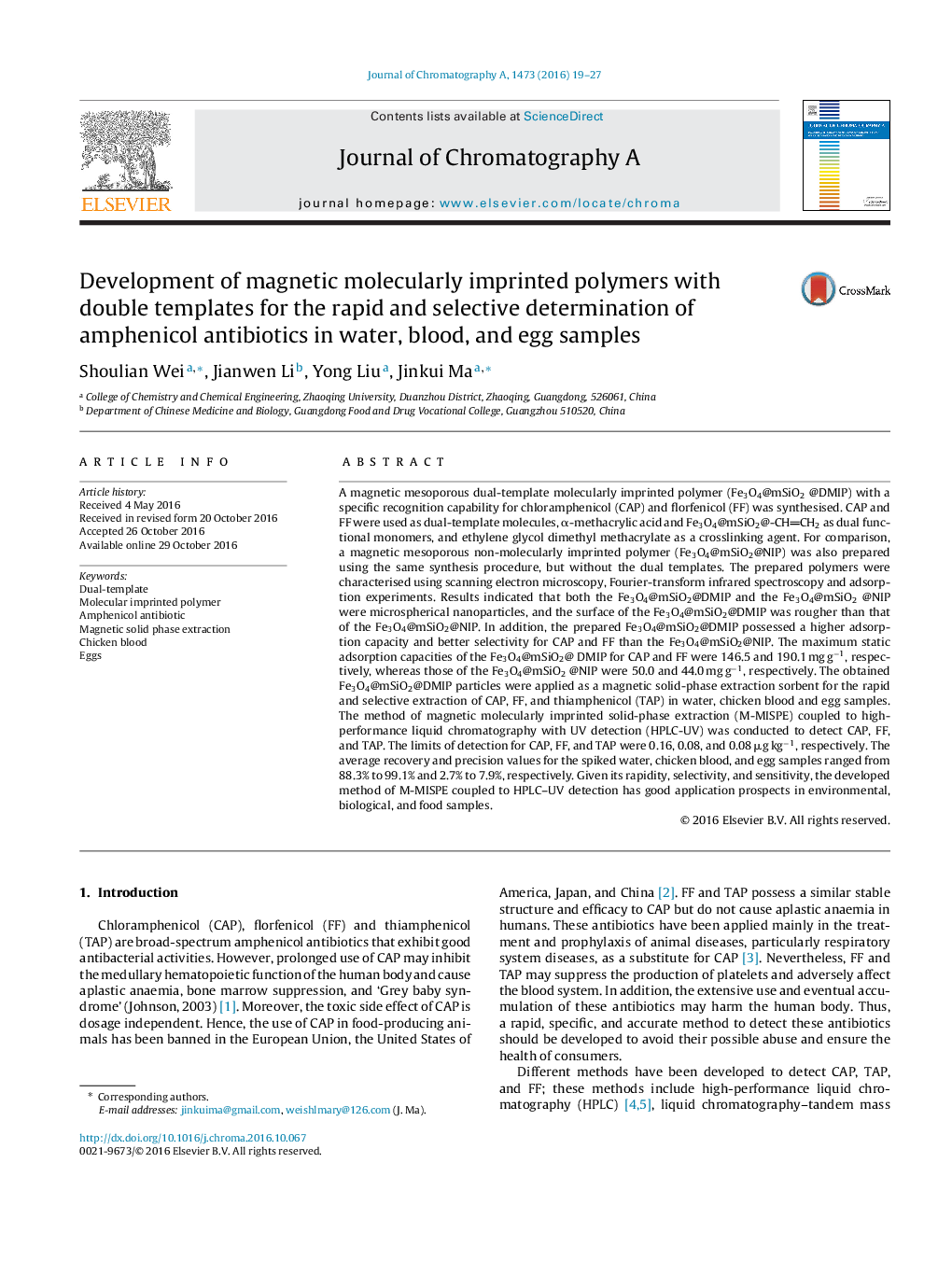| Article ID | Journal | Published Year | Pages | File Type |
|---|---|---|---|---|
| 5135435 | Journal of Chromatography A | 2016 | 9 Pages |
â¢A magnetic mesoporous dual-template MIP was synthesised and characterised.â¢The magnetic DMIP shows good adsorption capacity and selectivity for CAP and FF.â¢The magnetic DMIP used as absorbents for M-MISPE of trace amphenicol antibiotics.â¢The M-MISPE approach was proven to be rapid, selective, sensitive, and reliable.
A magnetic mesoporous dual-template molecularly imprinted polymer (Fe3O4@mSiO2 @DMIP) with a specific recognition capability for chloramphenicol (CAP) and florfenicol (FF) was synthesised. CAP and FF were used as dual-template molecules, α-methacrylic acid and Fe3O4@mSiO2@-CHCH2 as dual functional monomers, and ethylene glycol dimethyl methacrylate as a crosslinking agent. For comparison, a magnetic mesoporous non-molecularly imprinted polymer (Fe3O4@mSiO2@NIP) was also prepared using the same synthesis procedure, but without the dual templates. The prepared polymers were characterised using scanning electron microscopy, Fourier-transform infrared spectroscopy and adsorption experiments. Results indicated that both the Fe3O4@mSiO2@DMIP and the Fe3O4@mSiO2 @NIP were microspherical nanoparticles, and the surface of the Fe3O4@mSiO2@DMIP was rougher than that of the Fe3O4@mSiO2@NIP. In addition, the prepared Fe3O4@mSiO2@DMIP possessed a higher adsorption capacity and better selectivity for CAP and FF than the Fe3O4@mSiO2@NIP. The maximum static adsorption capacities of the Fe3O4@mSiO2@ DMIP for CAP and FF were 146.5 and 190.1 mg gâ1, respectively, whereas those of the Fe3O4@mSiO2 @NIP were 50.0 and 44.0 mg gâ1, respectively. The obtained Fe3O4@mSiO2@DMIP particles were applied as a magnetic solid-phase extraction sorbent for the rapid and selective extraction of CAP, FF, and thiamphenicol (TAP) in water, chicken blood and egg samples. The method of magnetic molecularly imprinted solid-phase extraction (M-MISPE) coupled to high-performance liquid chromatography with UV detection (HPLC-UV) was conducted to detect CAP, FF, and TAP. The limits of detection for CAP, FF, and TAP were 0.16, 0.08, and 0.08 μg kgâ1, respectively. The average recovery and precision values for the spiked water, chicken blood, and egg samples ranged from 88.3% to 99.1% and 2.7% to 7.9%, respectively. Given its rapidity, selectivity, and sensitivity, the developed method of M-MISPE coupled to HPLC-UV detection has good application prospects in environmental, biological, and food samples.
